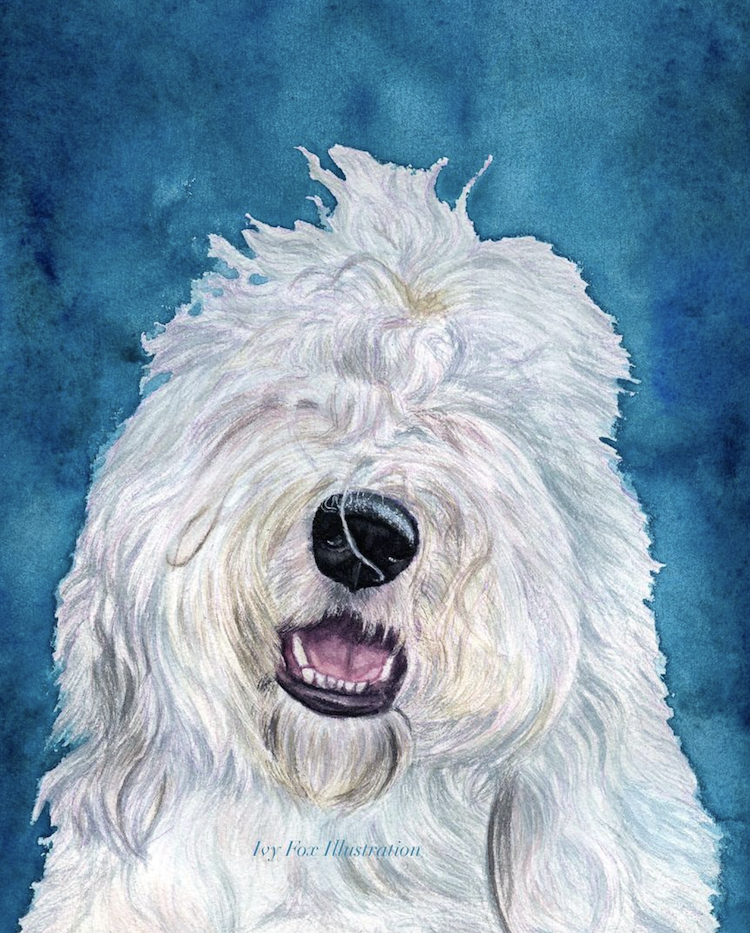
Not everyone is lucky enough to live with a large, hairy, huggable, sensitive, goofy and good natured clown.
Oh, did we not mention that it’s the Old English Sheepdog? If, on a dare, you ever call a phone number written on a bathroom stall following the words, “For a good time, call…..” an Old English Sheepdog answers.
You knew that, right?
In this post, however, our interest isn’t on the nature of this people-breed, or even its history, but in its name. Is the breed old? Is it English? Is it even a sheepdog as we understand the word today? Could a more accurate breed name have been the New, Not Entirely English, Drover?
If we take the word, “sheepdog,” to mean a dog that herds sheep, then originally, the OES wasn’t such a dog. In its early days, the Old English Sheepdog was actually a drover’s dog primarily used to drive sheep and cattle to market. While an OES most definitely can herd sheep, the breed’s stamina and adaptive abilities with shifts in the environment (moving stock from a quiet farm to a busy marketplace, and from pasture land to cobblestones) made it a highly effective shepherd’s drover. In fact, sources write that the breed was initially known as the “Shepherd’s Dog.”
Genetically speaking, the breed isn’t wholly English, either. In its present form, the OES can be traced back to the Southwestern Counties of England, but its progenitors are believed to have been a mix of various European herding dogs, including the Scottish Bearded Collie and the Russian Owtchar.
At this point, one might ask: Is the Old English Sheepdog even old?
As compared to certain other breeds, such as the Greyhound and Mastiff, the answer would be no. Most evidence puts its origin in the late 1800s, and that it got its current name in the late 19th century when it was first shown at a show in England in 1873. The thinking of some cynologists is that the “old” part of its name was due not to its age, but because of an older historical practice of docking the tails of working dogs. A century before, the tails of working dogs were docked to prove their working status and avoid taxes. This led to the breed’s nickname “bobtail.” In that light, who would ever have guessed that a humble shepherd’s dog would come to be owned, promoted, and exhibited at dogs shows by prominent American families (read: $$$$$) such as the Guggenheims, Vanderbilts, Morgans, Goulds, and Harrisons?
America’s royalty was rich, and it wasn’t stupid. Their ownership helped solidify the breed’s popularity, but in return, they got the following:
- “Loyalty is the Old English Sheepdog’s middle name, a faithful companion through thick and thin.” – Jean Gould
- “In the eyes of an Old English Sheepdog, loyalty is not just a trait but a way of life, unwavering and true.” – Dog Care Professionals
Image: Old English Sheepdog by Ivy Fox with consent
https://www.facebook.com/IvyFox.illustration
https://www.instagram.com/ivyfox.illustration/
